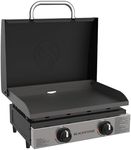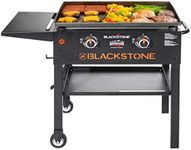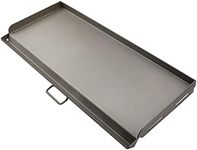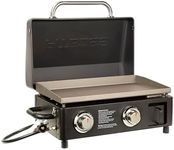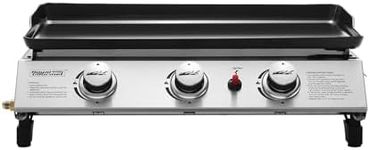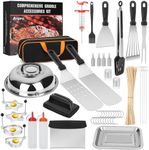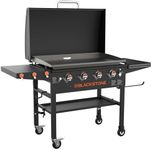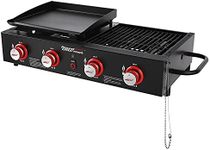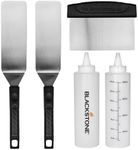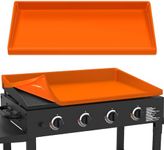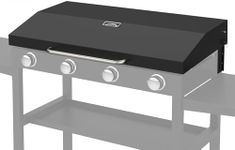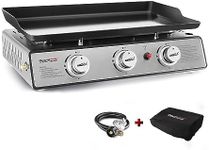Buying Guide for the Best Outdoor Griddles
Choosing the right outdoor griddle can make a big difference in your cooking experience, whether you're planning backyard breakfasts, camping trips, or big family gatherings. The key is to think about how you plan to use the griddle, how many people you usually cook for, and what types of food you want to prepare. By understanding the main features and specifications, you can find a griddle that fits your needs and helps you cook delicious meals outdoors with ease.Cooking Surface SizeThe cooking surface size refers to the total area available for cooking on the griddle, usually measured in square inches. This is important because it determines how much food you can cook at once. Smaller surfaces (around 200-300 square inches) are great for couples or small families, while medium sizes (400-600 square inches) suit most families or small gatherings. Large surfaces (over 700 square inches) are best for big groups or parties. To pick the right size, think about how many people you usually cook for and whether you want to prepare multiple foods at the same time.
Number of BurnersThe number of burners indicates how many separate heat zones the griddle has. More burners mean you can control different areas of the griddle at different temperatures, which is useful for cooking various foods at once. Griddles with one or two burners are simple and good for basic cooking, while three or four burners offer more flexibility for larger meals or more complex cooking. Choose based on how much control you want over your cooking and the variety of foods you plan to make.
Material of Cooking SurfaceThe material of the cooking surface affects heat distribution, durability, and maintenance. Common materials include cold-rolled steel, stainless steel, and cast iron. Cold-rolled steel heats evenly and is popular for its performance, but it needs regular seasoning to prevent rust. Stainless steel is easier to clean and resists rust, but may not hold heat as well. Cast iron retains heat very well but is heavy and requires more care. Consider how much maintenance you're willing to do and whether you prioritize even heating or easy cleaning.
PortabilityPortability refers to how easy it is to move or transport the griddle. Some griddles are designed to be stationary with sturdy legs and shelves, while others are lightweight or have foldable legs and wheels for easy transport. If you plan to use your griddle mainly at home, a heavier, more stable model is fine. If you want to take it camping or tailgating, look for a portable design that’s easy to pack and carry.
Ignition SystemThe ignition system is how you light the burners. Most outdoor griddles use either a push-button electronic ignition or a manual match-light system. Electronic ignition is more convenient and safer, especially for beginners, while manual systems are simple and reliable but require a lighter or match. If you value ease of use, go for electronic ignition; if you prefer simplicity and fewer parts that can break, manual ignition might be better.
Grease ManagementGrease management refers to how the griddle collects and disposes of cooking grease. Good grease management systems make cleanup easier and help prevent flare-ups. Look for griddles with a well-designed grease trap or cup that’s easy to remove and clean. If you cook fatty foods often, a larger or more accessible grease system will save you time and hassle.
